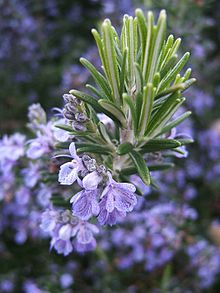
More evidence that low-calorie sweeteners are bad for your health
Studies show that artificial sweeteners can raise the risk of hypertension, metabolic syndrome, type 2 diabetes and heart disease, including stroke.

Natural Health News — A new study has shown that carnosic acid, a component of the herb rosemary, promotes eye health, providing a possible new approach for treating conditions such as age-related macular degeneration.
Herbs widely used throughout history in Asian and early European cultures have received renewed attention by Western medicine in recent years. Scientists are now isolating the active compounds in many medicinal herbs and documenting their antioxidant and anti-inflammatory activities.
In a study published in the journal Investigative Ophthalmology & Visual Science, Dr Stuart A. Lipton and colleagues at Sanford-Burnham Medical Research Institute (Sanford-Burnham) report that carnosic acid, a component of the herb rosemary, promotes eye health.
Using an animal model, Lipton’s team found that carnosic acid protects retinas from degeneration and toxicity in cell culture and in rodent models of light-induced retinal damage. Their findings suggest that carnosic acid may have clinical applications for diseases affecting the outer retina, including age-related macular degeneration, the most common eye disease in the US.
Age-related macular degeneration
Age-related macular degeneration likely has many underlying causes. Yet previous studies suggest that the disease might be slowed or improved by chemicals that fight free radicals – reactive compounds related to oxygen and nitrogen that damage membranes and other cell processes.
Lipton’s team first discovered a few years ago that carnosic acid fights off free radical damage in the brain. In their latest study, the researchers initially investigated carnosic acid’s protective mechanism in laboratory cultures of retinal cells.
The researchers exposed the cells growing in the dish to hydrogen peroxide in order to induce oxidative stress, a factor thought to contribute to disease progression in eye conditions such as macular degeneration and retinitis pigmentosa.
They found that cells treated with carnosic acid triggered antioxidant enzyme production in the cells, which in turn lowered levels of reactive oxygen and nitrogen species (cell-damaging free radicals and peroxides).
Rosemary’s therapeutic potential
The researchers next tested carnosic acid in an animal model of light-induced damage to photoreceptors – the part of the eye that converts light to electrical signals, enabling visual perception. Compared to the untreated group, rodents pre-treated with carnosic acid retained a thicker outer nuclear layer in the eye, indicating that their photoreceptors were protected. The carnosic acid-treated rodents also exhibited better electroretinogram activity, a measure of healthy photoreceptor function.
So what’s next for carnosic acid?
“We’re now developing improved derivatives of carnosic acid and related compounds to protect the retina and other brain areas from a number of degenerative conditions, including age-related macular degeneration and various forms of dementia,” said Lipton.

Please subscribe me to your newsletter mailing list. I have read the
privacy statement